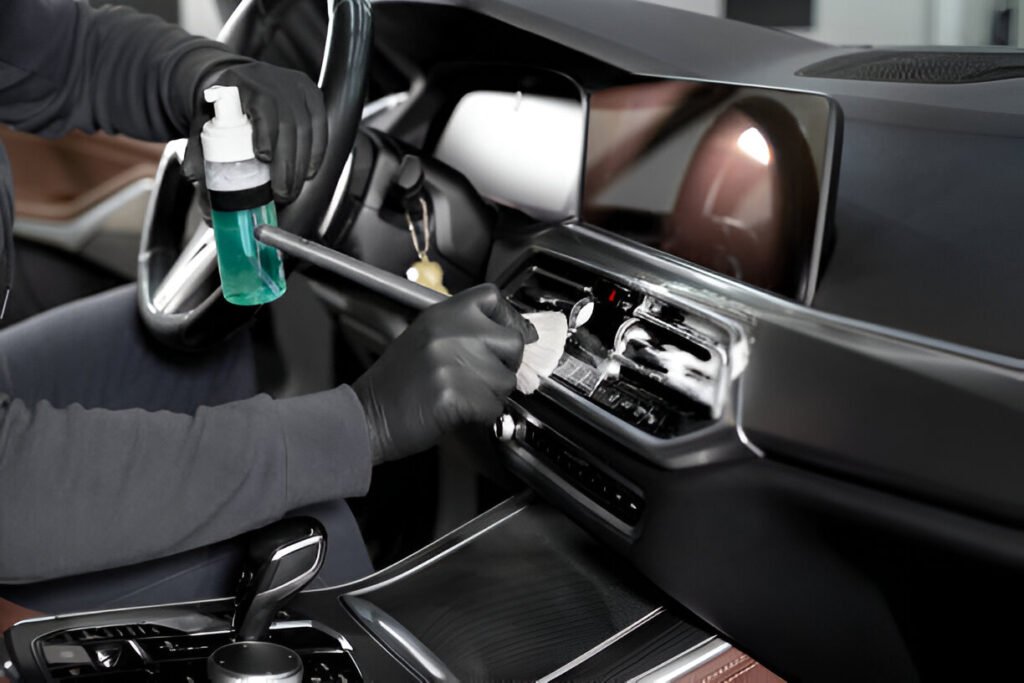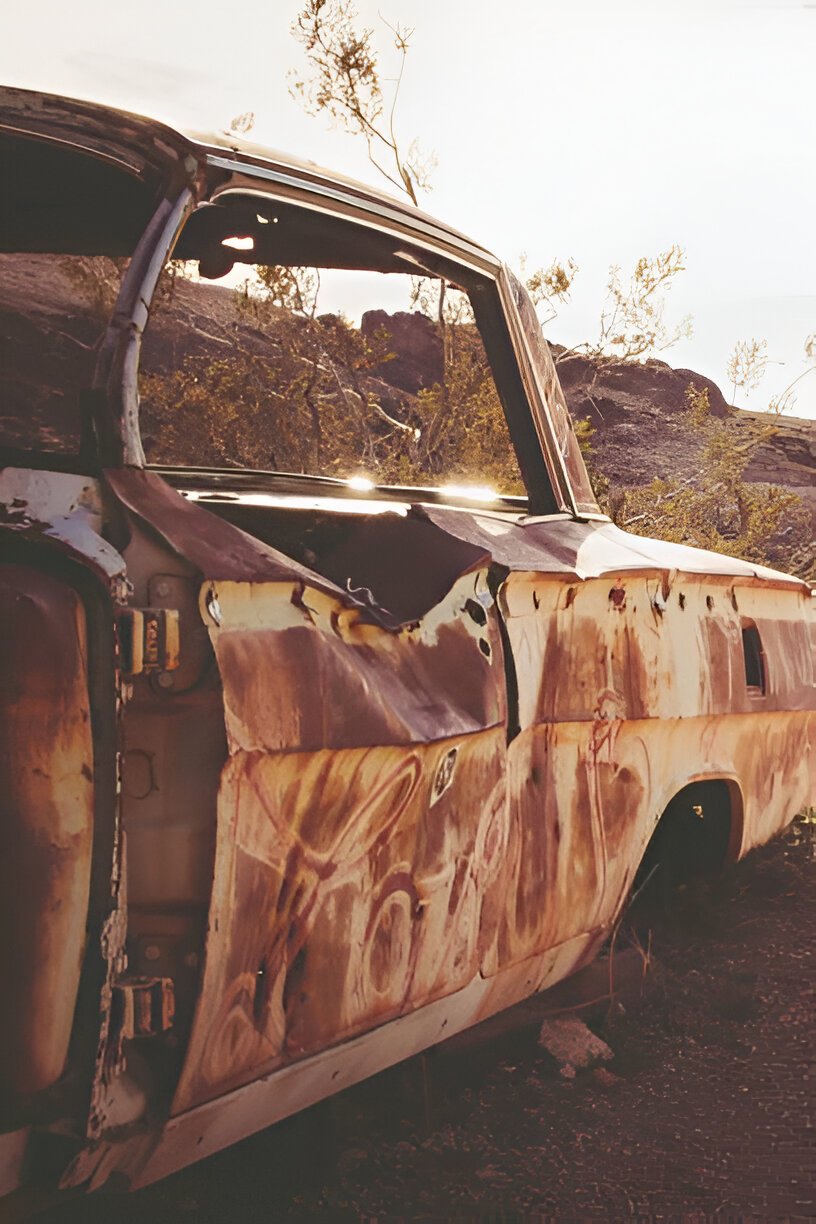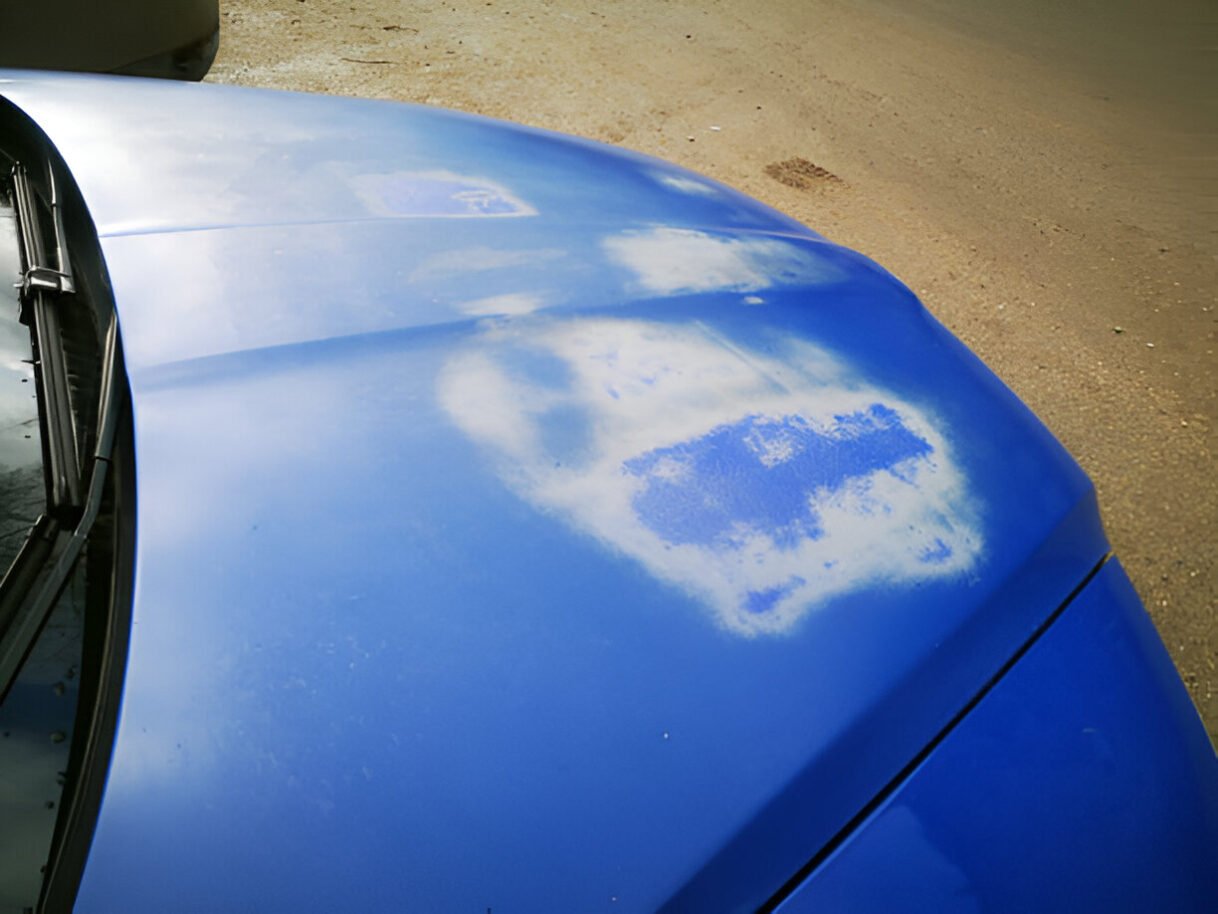Introduction
The paint on a car is more than just a cosmetic feature; it’s a crucial protective layer that shields the vehicle’s body from various environmental and physical threats. However, despite its importance, car paint is surprisingly vulnerable to a wide range of damaging factors. Understanding these causes is essential for any car owner who wants to maintain their vehicle’s appearance and value over time.
This comprehensive guide delves into the main causes of car paint damage, exploring how various factors can affect your vehicle’s finish. From environmental hazards to everyday wear and tear, we’ll examine the science behind paint damage and provide insights into how you can protect your car’s exterior.
Environmental Factors
UV Radiation
One of the most pervasive and persistent threats to your car’s paint is ultraviolet (UV) radiation from the sun. UV rays penetrate the clear coat and paint layers, breaking down the chemical bonds in the paint. This process, known as photodegradation, leads to oxidation, which manifests as fading, dulling, and a chalky appearance on the paint surface.
The effects of UV radiation are cumulative and irreversible. Cars parked outdoors for extended periods are particularly susceptible. Light colors tend to be more resistant to UV damage, while darker colors show the effects more readily. The intensity of UV radiation varies by location, with areas closer to the equator experiencing more severe effects.
Acid Rain
Acid rain is a result of air pollution, where sulfur dioxide and nitrogen oxides react with water, oxygen, and other chemicals in the atmosphere. When this acidic precipitation falls on your car, it can etch into the clear coat and eventually the paint layer.
The damage from acid rain often appears as small, round marks on horizontal surfaces like the hood, roof, and trunk. Over time, these marks can become more pronounced, leading to permanent etching if not addressed promptly. Areas with high industrial activity or dense traffic are more prone to acid rain, putting cars in these regions at higher risk.
Bird Droppings
While they might seem harmless, bird droppings are highly corrosive to car paint. The damage occurs due to two factors:
- Acidity: Bird droppings contain uric acid, which can eat through the clear coat and paint if left on the surface.
- Etching: As bird droppings dry and contract in the sun, they can pull at the paint, causing physical damage.
The longer bird droppings remain on the car, the more severe the damage becomes. In some cases, the paint may be permanently etched within just a few hours on a hot day. Regular washing and prompt removal of bird droppings are crucial to preventing this type of damage.
Tree Sap
Tree sap is another natural substance that can wreak havoc on car paint. When sap falls on a car, it can quickly harden in the sun, forming a stubborn, sticky residue. If left untreated, sap can etch into the clear coat and potentially bond with the paint itself.
The damage from tree sap is often exacerbated by heat and sunlight, which can cause the sap to bond more strongly with the paint surface. Removing hardened sap without proper techniques and products can lead to scratching, compounding the damage.
Physical Damage

Stone Chips and Road Debris
One of the most common forms of paint damage occurs during regular driving. Small stones, gravel, and other road debris kicked up by vehicles can strike your car at high speeds, chipping the paint or creating small craters in the finish. These chips often expose the underlying metal, which can then become vulnerable to rust.
Areas most prone to stone chips include the front of the hood, the front bumper, and around the wheel wells. The severity of the damage depends on factors such as the size and shape of the projectile, the speed of impact, and the quality and thickness of the paint.
Scratches and Swirl Marks
Scratches can range from light surface marks to deep gouges that penetrate multiple layers of paint. They can be caused by a variety of factors:
- Improper washing techniques (using dirty sponges or abrasive materials)
- Brushing against objects while parking
- Vandalism
- Automated car washes with worn brushes
Swirl marks, often visible in direct sunlight, are a network of fine scratches usually caused by improper washing or drying techniques. While individual swirl marks are minor, their cumulative effect can significantly dull the paint’s appearance.
Parking Lot Damage
Parking lots are hotspots for paint damage due to the high concentration of vehicles and potential for accidents. Common types of parking lot damage include:
- Door dings from careless opening of adjacent car doors
- Shopping cart impacts
- Scrapes from tight parking spaces
The severity of parking lot damage can vary widely, from minor scuffs to deep dents and paint transfer. While some minor damage may be polishable, more severe impacts may require professional repair.
Chemical Damage

Industrial Fallout
Industrial fallout refers to airborne particles of industrial origin that settle on your car’s surface. These particles can include metal shavings, chemical residues, and other pollutants. When these particles land on your car, they can embed themselves in the clear coat or react with the paint, causing staining or etching.
The damage from industrial fallout often appears as tiny rust-colored or black specks on the paint surface. These specks can be particularly noticeable on light-colored vehicles. Areas near factories, construction sites, or railways are more susceptible to industrial fallout damage.
Improper Car Care Products
While car care products are designed to protect and enhance your vehicle’s appearance, using the wrong products or applying them incorrectly can lead to paint damage. Some common issues include:
- Using household cleaners that are too harsh for automotive paint
- Applying wax or sealant to a dirty surface, which can cause scratching
- Using contaminated wash mitts or drying towels that can introduce abrasives
- Over-using clay bars or other decontamination products, which can lead to marring
It’s crucial to use products specifically formulated for automotive use and to follow manufacturer instructions carefully to avoid inadvertent damage.
Gasoline and Other Automotive Fluids
Spills or splashes of automotive fluids can quickly damage car paint if not cleaned promptly. Gasoline, in particular, can soften and dissolve paint if left on the surface. Other fluids to be wary of include:
- Brake fluid
- Engine oil
- Coolant
- Battery acid
These fluids can cause staining, etching, or complete removal of paint in severe cases. Quick action to clean spills and neutralize any remaining residue is essential to preventing long-term damage.
Oxidation and Fading

Oxidation is a chemical reaction that occurs when the paint is exposed to oxygen over time. This process is accelerated by exposure to UV radiation, heat, and environmental pollutants. As paint oxidizes, it loses its luster and color intensity, often resulting in a chalky or faded appearance.
The clear coat is the first line of defense against oxidation, but once it begins to break down, the color coat becomes vulnerable. Oxidation can progress to the point where the paint begins to flake off, exposing the primer or bare metal underneath.
Factors that contribute to accelerated oxidation include:
- Prolonged sun exposure
- Lack of regular waxing or sealing
- Exposure to harsh environmental conditions
- Age of the vehicle
While all cars will eventually experience some degree of oxidation, proper care and protection can significantly slow this process.
Poor Maintenance
Neglecting regular maintenance can lead to accelerated paint damage. Proper car care involves more than just occasional washing; it requires a comprehensive approach to protect the paint from various threats. Some aspects of poor maintenance that can lead to paint damage include:
- Infrequent washing, allowing contaminants to build up and etch the paint
- Failure to address small chips or scratches promptly, which can lead to rust
- Not applying protective coatings like wax or sealants regularly
- Ignoring signs of clear coat failure, which can lead to more extensive damage
Establishing a regular maintenance routine that includes washing, decontamination, and protection can significantly extend the life and appearance of your car’s paint.
Manufacturing Defects
While less common than other causes, manufacturing defects can lead to premature paint failure. These defects can occur at various stages of the painting process and may not become apparent until months or years after the vehicle is produced. Some examples of manufacturing defects include:
- Poor adhesion between paint layers
- Incompatible materials used in the painting process
- Inadequate curing or improper application of clear coat
- Contamination during the painting process
Manufacturing defects often manifest as peeling, bubbling, or uneven fading of the paint. In many cases, these issues are covered under the vehicle’s warranty, but addressing them promptly is crucial to prevent further damage.
Extreme Temperatures
Both extremely high and low temperatures can take a toll on car paint. Heat causes the paint to expand, which can lead to cracking or checking (a pattern of fine lines in the paint). Prolonged exposure to high temperatures can also accelerate oxidation and fading.
On the other hand, extreme cold can make paint more brittle and prone to chipping. The constant expansion and contraction caused by temperature fluctuations can weaken the bond between paint layers over time.
Additionally, rapid temperature changes, such as pouring hot water on a cold car to de-ice it, can cause thermal shock, potentially leading to paint cracking or peeling.
Rust and Corrosion
While not strictly a form of paint damage, rust and corrosion are closely related issues that can severely impact a vehicle’s paint and overall condition. Rust occurs when iron or steel is exposed to oxygen and moisture, leading to oxidation. In vehicles, this process often begins in areas where the paint has been compromised, such as chips or deep scratches.
Once rust takes hold, it can spread beneath the paint, causing bubbling and eventually leading to paint failure. Factors that accelerate rust formation include:
- Exposure to road salt in winter conditions
- Living in coastal areas with high salt content in the air
- Prolonged exposure to moisture without adequate drying
- Pre-existing damage to the paint that exposes bare metal
Preventing rust involves promptly addressing any paint damage, regularly washing and drying the vehicle (especially after exposure to salt), and applying protective coatings to vulnerable areas.
Prevention and Protection

While car paint is susceptible to various forms of damage, there are numerous steps car owners can take to protect their vehicle’s finish:
- Regular Washing: Frequent washing removes contaminants before they can cause damage. Use proper techniques and car-specific products to avoid introducing new scratches.
- Waxing and Sealing: Apply wax or sealant regularly to provide a protective barrier against environmental contaminants and UV radiation.
- Parking Smart: When possible, park in covered areas or use a car cover to protect against UV rays, bird droppings, and other environmental hazards.
- Prompt Repairs: Address chips, scratches, and other damage quickly to prevent rust and further deterioration.
- Paint Protection Film: Consider applying paint protection film to high-impact areas like the front of the hood and fenders.
- Ceramic Coatings: Professional-grade ceramic coatings can provide long-lasting protection against various forms of damage.
- Regular Detailing: Professional detailing can help identify and address potential issues before they become serious problems.
- Avoiding Automated Car Washes: Opt for hand washing or touchless car washes to minimize the risk of scratches and swirl marks.
- Using Quality Products: Invest in high-quality car care products designed specifically for automotive use.
- Education: Learn proper car care techniques to avoid inadvertently causing damage during routine maintenance.
Conclusion
Car paint damage is a multifaceted issue influenced by a wide range of factors, from environmental conditions to everyday use and maintenance practices. Understanding these causes is the first step in protecting your vehicle’s appearance and value.
While some factors, like UV radiation and environmental pollutants, are difficult to avoid entirely, many forms of paint damage can be prevented or minimized through proper care and protection. Regular maintenance, prompt attention to minor issues, and the use of protective products can go a long way in preserving your car’s paint.
As automotive paint technology continues to advance, new protective measures and repair techniques are constantly being developed. Staying informed about these advancements and adapting your car care routine accordingly can help ensure that your vehicle maintains its shine and protection for years to come.
Remember, a well-maintained paint job is not just about aesthetics; it’s an important factor in preserving your car’s overall condition and resale value. By taking proactive steps to protect your vehicle’s paint, you’re investing in its long-term health and appearance.

